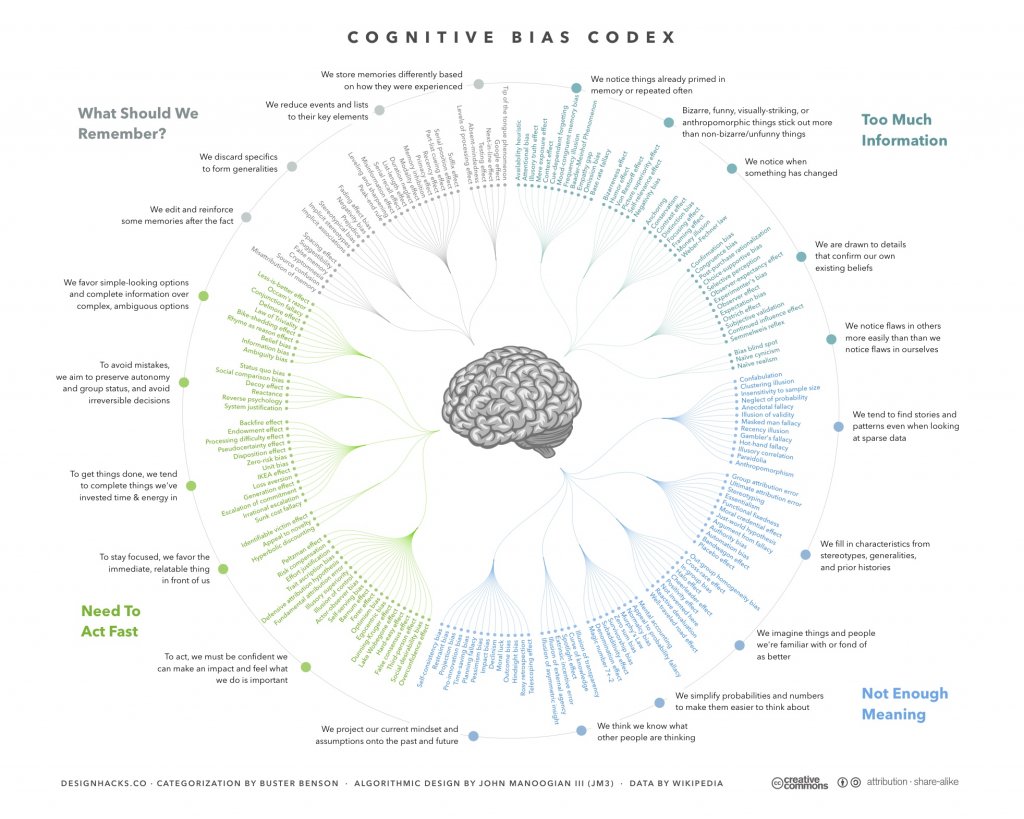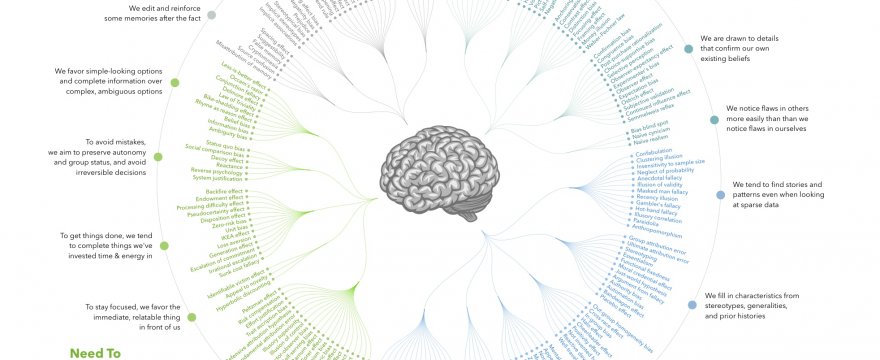I’ve been thinking about biases a lot lately.
People make money exploiting or compensating for biases. People lose money being unaware of their bias.
When I’m feeling good, I enjoy the associated biases and when I’m not, I feel like I’m a cesspool of it.
If you haven’t seen this terrifying wheel of cognitive biases, it’s pretty neat:

I made it clickable but if you’re just glancing at it, the four corners are:
- What should I remember?
- Need to act fast
- Not enough meaning
- Too much information
I don’t have much to say on that, but I thought it was worth pointing out there are key moments when our biases crop up.
We have limited memory so we filter. With limited time we choose the safe option. We stereotype when there isn’t enough information and default to existing beliefs when there’s too much of it.
Ann and I were driving home from farm sitting for her aunt and uncle (also list members – Hi Elizabeth, Hi Jim!) in New Hampshire yesterday and I was using the “Search Along Route” feature on Google Maps to find us a place to eat.
The reviews are all in the 4.2 to 4.5 range (and G reviews are trash anyway) on that thing so you’re really left with the name of the restaurant and how far out of your way it is in making a decision.
After hitting the refresh button a few times, I realized that I was drawn to the ones I had already registered in my mind from all of 30 seconds before: mere exposure effect.
Mere exposure effect is a fun one. You can get people comfortable with pretty much anything by exposing them to it enough. At a certain point familiarity sparks preference, basically how branding works.
Thought I’d find a decent point pulling on that thread but I’m not there yet and it’s late.
—
As an update on the graph content audit, I’m still creating a preprocessing workflow, but also realizing I should move forward with where I’m at. I’ll link to it in a future email but won’t be boring you with a code walkthrough.
